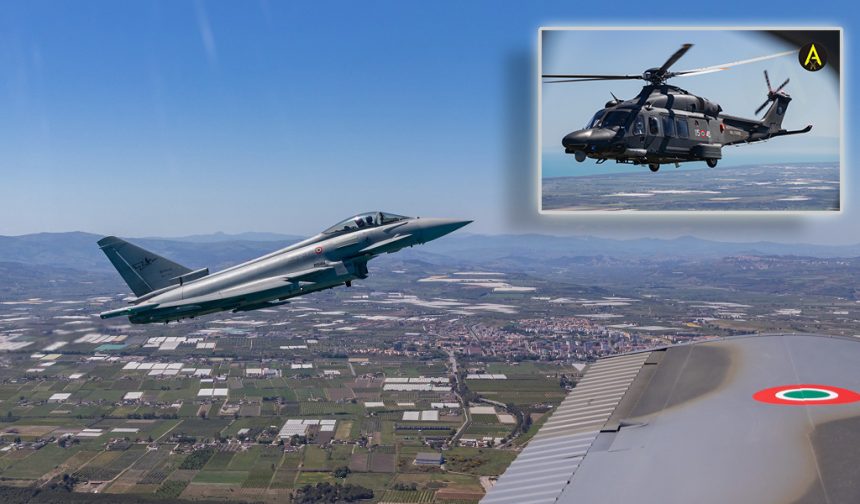We have taken part in a scheduled Slow Mover Intercept exercise during which we were intercepted by Eurofighter F-2000 fighter jets and HH-139 helicopters. Here’s how it went.
When one thinks about Air Defense and the Quick Reaction Alert nowadays, the thought immediately goes to big airliners that might be hijacked, not responding to radios and so on, with the worst-case scenario being 9/11. However, there is an even more subtle threat, which is presented by small general aviation aircraft and ultralight aircraft who usually fly low and slow and thus harder to detect. Aircraft with these characteristics are usually described as “Slow Movers”.
To counter this threat, the Slow Mover Intercept mission was introduced and air forces around the world regularly train for it as the flight envelope of these small fixed-wing aircraft and helicopters presents some challenges for the pilots of fighter jets trying to intercept them. More often than not, these aircraft fly at very low altitude and speeds that might be slower than the stall speed of fighter aircraft, requiring specific procedures for a safe interception.
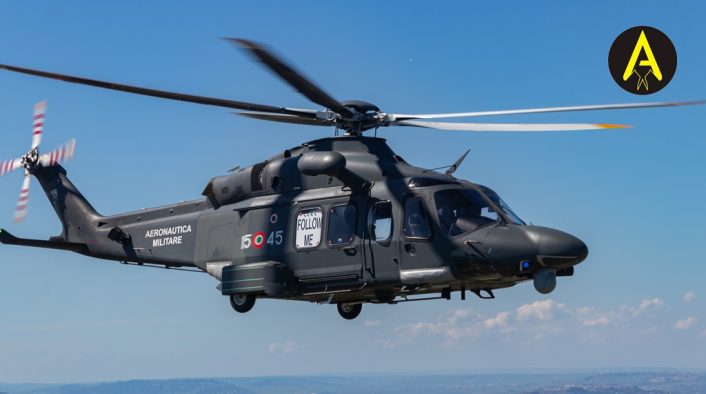
Because of this, helicopters might get involved in the QRA missions to assist fighter jets and take over once they arrive on scene. The Italian Air Force (Aeronautica Militare) is among those using both fighters and helicopters for SMI scenarios, deploying them to protect no-fly zones for important events since the early 2000s. During standard QRA missions from their homebases, usually the fighters take the precedence for the SMI scenarios but, if needed, helicopters can also be scrambled.
The Slow Mover Intercept capability was also provided by the F-16ADF which were leased as stopgap solution until the Eurofighter Typhoon (F-2000A in accordance to Italy’s MOD Mission Design Series) became operational, assisted by HH-3F CSAR helicopters. Our Editor David Cenciotti took part in a SMI training scenario in 2009 with the F-16s from the X Gruppo Caccia (10th Fighter Squadron), when the unit was still based at Trapani Air Base.
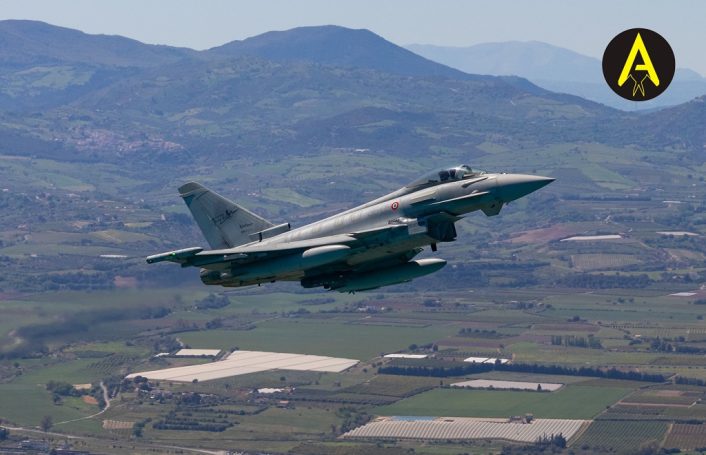
Since then, the assets and procedures for these missions has changed. For some years, even before the F-16s were committed to the mission, the XII Gruppo Caccia (12th Fighter Squadron) was assigned the SMI role and was equipped with the MB-339CD trainer (FT-339C in accordance to Italy’s MOD Mission Design Series) until it received the first Eurofighters. The MB-339CD was given this secondary mission since it has a slower stall speed compared to fighter jets (below 100 kt, depending on the configuration) and it can also be armed with AIM-9L air-to-air missiles and 30 mm gunpods.
The Slow Mover Intercept mission’s responsibility has now been transferred to the Eurofighter units, supported by HH-139 helicopters. The Italian Air Force regularly trains for this mission, with periodic exercises which sometimes also involve F-35 5th gen fighter jets and HH-101 helicopters. In fact, as the F-2000s, the F-35s are part of the SSSA (Servizio Sorveglianza Spazio Aereo – Air Space Surveillance Service) and the NATO QRA, so they can be assigned QRA duties too, both in Italy and abroad.
We had a chance to take part in a scheduled Slow Mover Intercept exercise, on April 27, 2022, at Gioia del Colle Air Base, in southeastern Italy, home of the 36° Stormo (Wing). During the exercise, this Author flew in the SIAI-Marchetti S.208M liaison and glider-towing aircraft of the 60° Stormo (Wing), based at Guidonia, which was deployed to Gioia del Colle to act as the “zombie” (as an unidentified aircraft that triggers a QRA launch is called in the interceptors’ lingo).
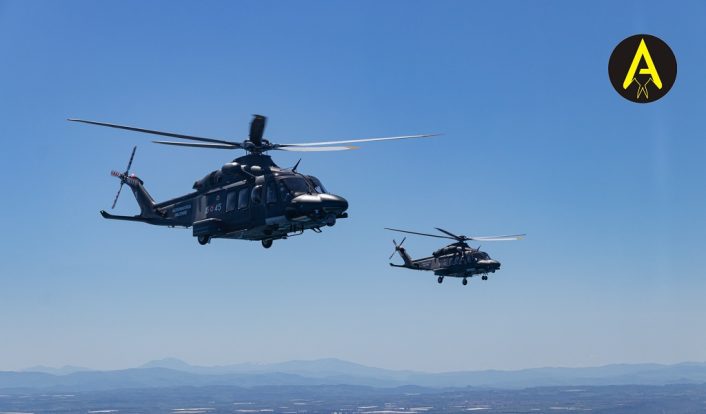
The S.208M (U-208A in accordance to Italy’s MOD Mission Design Series) is the military variant of the S.205, a low wing, single engine, four-seater general aviation aircraft designed in the 1960s. The S.208 is in the same class of aircraft like the Beechcraft Bonanza and the Piper PA-24 Comanche, so it’s perfectly suited to simulate general aviation aircraft during SMI scenarios. Also, its camouflage paint scheme makes it even harder to visually acquire the S.208 at low altitude during the interception.
Our morning in Gioia del Colle began with the mission briefing with all the crews involved in the exercise, which involved our SIAI U-208A, three Eurofighter F-2000 (one of those was a twin-seater TF-2000) of the X Gruppo Caccia and two HH-139A helicopters of the 84° Centro CSAR. A great emphasis goes to the safety of the flight, as the aircraft would have to fly very close to each other and the Eurofighters are flying near the lower limits of their flight envelope, so it is important to thoroughly discuss minimum speeds, deconfliction and which maneuvers to avoid.
As you would expect, during these complex exercises, a particular focus goes on maximizing the training value of the mission. Because of this, multiple intercepts were planned during the same flight, so every pilot could get a chance to train in the SMI role. A key point during the planning was the speed of the intercepted aircraft, as it needed to be high enough to be safe for the fighters while also keeping the fuel consumption under control in order to provide the longest vul time (vulnerability time – the period of time when an aircraft is vulnerable to harm) possible for multiple intercepts.
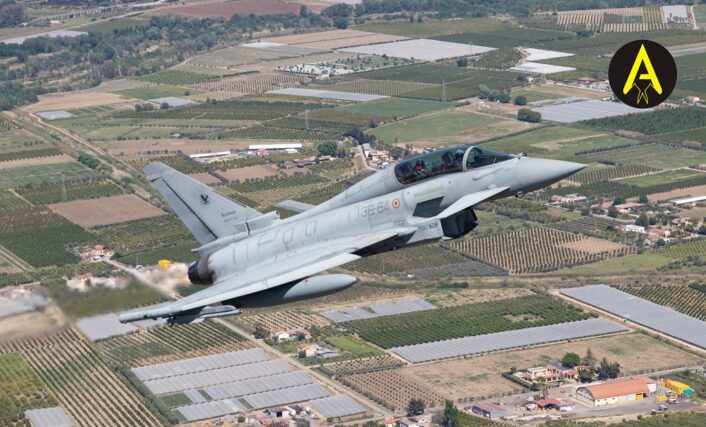
Our flight, which was expected to last approximatively one hour and 50 minutes, was divided in three different training scenarios, which were then followed by a simulated forced landing. Since we were flying as the zombie, we were the first to take off and departed from Gioia del Colle’s runway 32L at 13:48LT with the callsign “VENTO 30”. Since our plan was to fly low and slow, there wasn’t much need to climb and we leveled off at 2,000 ft while heading towards the Gulf of Taranto, where we began orbiting over the coast.
In the meanwhile, the Eurofighters were being scrambled to find us with the help of the Ground Controlled Interception (GCI) operators. Here comes the first complication for the fighter pilots, courtesy of the doppler radar: usually a doppler radar ignores the contacts with a speed equal to or lower than the one of the interceptor aircraft, as it might consider them as background noise from radar waves reflected by the ground. If the intercepted aircraft is not built with metal, the situation gets worse, underlining the need to practice the visual interception of such targets.
We already mentioned the second complication, the low speed. Slow Mover Intercept missions are a challenging task as fast jets are not designed as slow as general aviation or ultralight aircraft. In this type of mission profile, the pilot needs to balance the speed of his fighter jet to the target’s speed in order to keep it safe while also being able to give all the details concerning the identification of the intercepted aircraft.
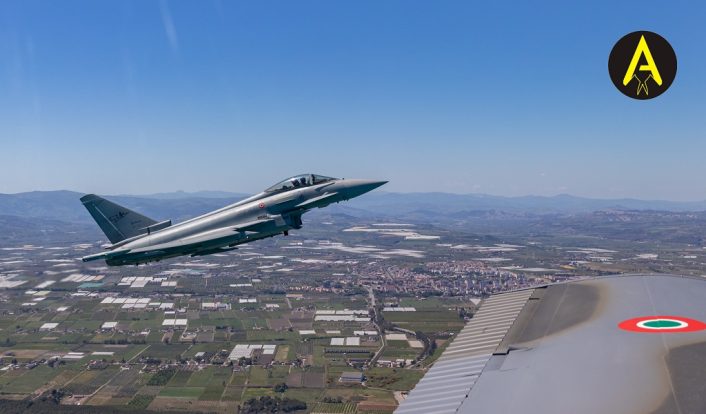
Based on the target’s speed, the pilot might face two different scenarios: the intercepted aircraft is flying at a speed comparable with the minimum safe speed for the fighter jet or a much lower speed. In the former case, the fighter jets are still able to get in formation with the “zombie” and fly alongside it, even if this requires an attitude with an high AOA (Angle Of Attack). However, that’s not always the case.
Most of the times, like during our mission, the Slow Mover aircraft is flying at a speed lower than the fighter jet’s minimum speed, so the interceptors use a special procedure. When this happens, the two fighters set up a “racetrack” pattern where one fighter is on the inbound side of the pattern while the second one is on the outbound side, so that at each stage of the intercept the zombie is always in the sights of the interceptors.
During this maneuver, the fighters pass the intercepted aircraft on the port side while keeping a safe lateral separation. As they “overtake” the zombie, the pilots check for the aircraft registration, that they will later pass to the GCI along with all the info useful for the identification and for the decision-making process on the prosecution of the intercept.
So, as we’re flying at 2,000 ft and 130 kts over the coast, we look behind our shoulders and we find the first F-2000 slowly catching up on us as the pilot relays back the info regarding our VID (Visual IDentification), followed seconds later by the second fighter. As the two single-seater Typhoons of the “Picca” flight break away, the two HH-139s of the “Duffy” flight appear at our 10 o’clock, ready to form up in a shadowing position slightly behind our left wing.
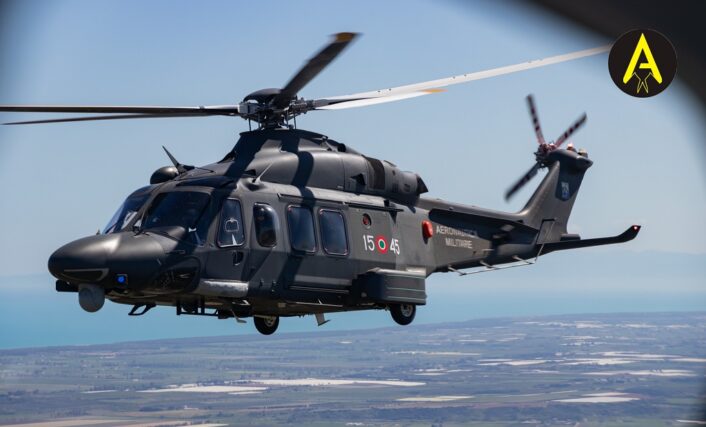
The helicopters continue to shadow us for some minutes, keeping the zombie under surveillance, before breaking away and clearing the airspace for the second scenario. While the first training scenario was over the sea, the second one was over land. Just as before, after a few orbits, the Eurofighters appeared through our rear windows, slowly catching up on us. This time one of the single seaters swapped place with the twin seater and both fighters continued to fly by us until the helicopters appeared at our 1 o’clock and were ready to intercept us.
This second training scenario, in fact, included the entire procedure and not only the interception and VID. Again, the HH-139s got in a shadowing position, one on each wing, and began identifying us with the help of their nose-mounted Electro-Optical/InfraRed sensor (EO/IR). Once the helicopters relayed all info for the VID, they moved forward to get in visual contact with the pilots of the zombie. In fact, if the radio contact is not successful, the helicopters’ pilots work to get the attention of the intercepted aircraft’s pilots while the crew in the back exposes some panels to help the communication.
Among the panels, you can find: “Prohibited area”, meaning that the zombie Is flying in a no fly zone or, more generally, a restricted area; “Follow me”, which is self-explanatory and orders the zombie to follow the interceptors out of the restricted area; “Contact 121.5 MHz”, another self-explanatory message ordering the intercepted aircraft to switch to the international guard frequency to communicate with the helicopters.
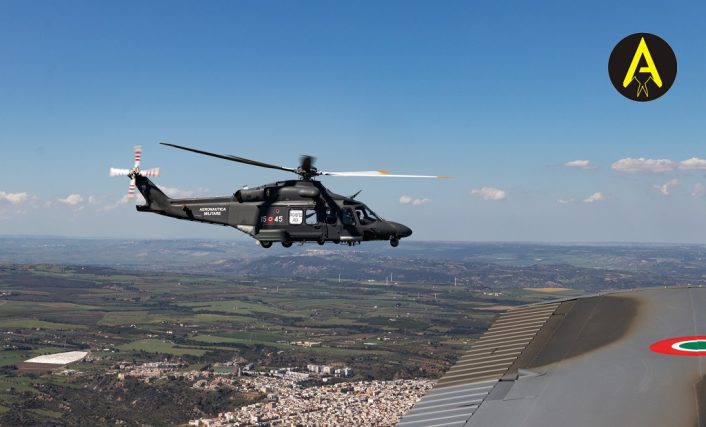
While they were not present during this exercise, usually Slow Mover Interceptor Operators (SMIO) are on board the helicopters. SMIO are both pararescuemen of the CSAR center or Fucilieri dell’Aria (Air Riflemen) of the 16° Stormo, trained in the use of precision weapons (both marksman and sniper rifles) from aerial platforms, ready to provide an air-to-air engagement capability, should the need arise, to stop a rogue aircraft. For this role they will use precision weapons like the recently introduced ARX-200 7.62 x 51 mm Designated Marksman Rifle.
We then transitioned to the third scenario, where our three-ship formation became even more unusual as two Eurofighters joined us again. We became, in fact, the leader of a five-ship V-shaped formation with our U-208, two HH-139s and two F-2000s. Having used most of their fuel, the fighters were now able to stay in formation almost effortlessly without the need to use the racetrack pattern.
As our vul time approached the end, the fighters broke the formation while we headed back to Gioia del Colle. We were still escorted by the helicopters, simulating a forced landing as it would happen if further checks are needed after the VID. This phase of the flight is where the helicopters really come in handy, as they can easily stay on our wing until the touchdown on the runway at around 60 kts.
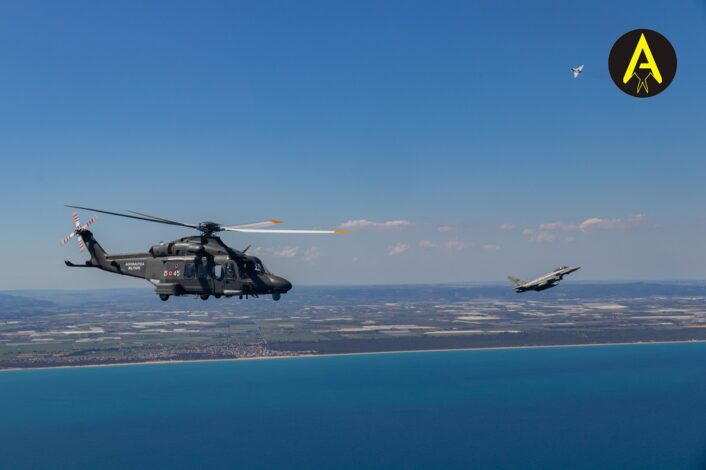
After vacating runway 32R after a 1h 40 min- flight, we then returned to our parking spot where, in a real SMI forced landing, we would be met by the force protection or law enforcement for further checks. This Is what happened, for an instance, a couple of months ago in France, when a stolen Cessna 172 was intercepted by a Mirage 2000 and forced to land, with law enforcement agencies waiting on the ground to take over.
Slow Mover Intercept missions are among the most complex air defense missions, requiring perfect coordination between a large number of assets during the Quick Reaction Alert launch. This is why such missions are practiced periodically, so pilot can train and maintain their proficiency in this complex scenario, as well as validating the procedures during these exercises, designed to be as challenging and as realistic as possible, to better counter the asymmetric threat brought by slow movers.

